
![5e3962ad2ba7d824d6c0fd19822626c1[1]](http://earthcelebrations.com/wp-content/uploads/2009/08/5e3962ad2ba7d824d6c0fd19822626c11-150x150.png)
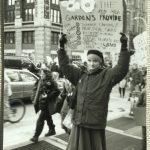
The community gardens on the Lower East Side and throughout New York City were created by local residents in the 1970’s and 80’s who got together in small groups and volunteered their time, hard work, dedication and creative positive energy to work together to improve and transform their neighborhoods that were riddled with vacant rubble-strewn lots.
These vacant lots came into existence in the 1970’s due to city neglect. The city also had removed and reduced the number of firehouses from these low-income areas that resulted in fires causing whole buildings to burn to the ground. These lots became dumping grounds of waste and dens for drugs and crime in the neighborhood until the people came together, cleared away the rubble and planted trees, flowers, and vegetable gardens transforming these lots into green oases.
The gardens that were created as a spontaneous act of urban improvisation by local residents to transform their neglected neighborhood into a better environment for themselves and their community soon became the hubs of positive community life and open space and nature within the otherwise harsh urban environment. They provided an invaluable natural as well as cultural resource for thousands of people in the community providing open space, fresh air, trees, and flowers; outdoor environmental and gardening classes for school children; multi-cultural centers featuring theater, music, arts programs, public festivals and events; inter-faith churches for religious ceremonies, weddings and funerals; healing centers for seniors, the handicapped and the infirm; and a place to grow vegetables, supplemental food for many people. The gardens became a positive force in the neighborhood by removing the drug dealers from these formerly untended vacant lots, transforming waste dumps into green open space, reducing crime by attracting youth and engaging them in positive life-affirming activities, and relieving tensions that existed between the diverse cultural and special interest groups by uniting people through nature to get to know one another and discover their common interests and goals. The gardens had become an irreplaceable asset to the overall community that had not been valued in quantifiable terms nor made public to the neighborhood and beyond to the city administration.
As hundreds of gardens had been cultivated throughout the 1970’s in these low-income neighborhoods, they were eventually acknowledged officially through a city-sponsored Operation Greenthumb program, inviting many of the gardeners to enter into yearly leases on the city-owned land as a way to officially acknowledge the garden sites but at the same time keeping control of the land. Many gardens entered into an agreement that the gardens could be taken away at any time and were considered impermanent, just a temporary use of vacant land.
In the 1980’s New York City developed the “cross-subsidy plan” which targeted almost all of the gardens for middle and market rate housing.
![5e3962ad2ba7d824d6c0fd19822626c1[1]](http://earthcelebrations.com/wp-content/uploads/2009/08/5e3962ad2ba7d824d6c0fd19822626c11.png)
On January 8, 1986, the City destroyed Adam Purple’s Garden of Eden known world-wide for its magnificent design of colorful concentric circles of flowers, plants, and trees, with a yin/yang central design to build housing. The bulldozing of this legendary garden signaled the potential plight all the gardens might eventually face. Most community gardeners had not yet directly confronted the threat of losing their gardens as the economic downturn after 1987 halted and slowed development that would threaten the gardens but it was a lingering reality signaled by the loss of the Garden of Eden.
In 1991, Felicia Young, as an artist living on the Lower East Side, initiated the Procession to Save Our Gardens to bring attention to the magnificent network of gardens that existed under looming threat of destruction by development plans and to propose the idea of their permanent preservation. She had been exploring the use of large-scale collaborative art projects as a creative method of engagement to address and bring about change on critical issues confronting a community. Since 1988 she had been developing projects utilizing the theatrical-pageant public art form that integrated sculpture, painting, music, dance, theater, poetry, ceremony and performance, along with civic engagement and activism. She proposed to the gardeners creating a large-scale art project with a daylong 8-hour procession visiting over 40 gardens on the Lower East Side. Gardeners, local artists, residents and children in the neighborhood could create visual art and performances to present at each garden celebrating and telling the story of achievement, struggle and the effort to permanently preserve the gardens.
After the first year, the Procession to Save Our Gardens developed into an annual project because the enthusiasm and will to do it again was there and it served the interests of the community. The project grew into an on-going partnership building and creative production process with over 40 participating gardens and over 50 local organizations, schools, community centers, 500 local artists, and thousands of participants. For 15 years the project grew deep roots within the neighborhood catalyzing a grassroots and coalition effort to preserve the gardens through creative action, joyous affirmation of the value of the gardens, and envisioning and enacting the saving of the gardens through the mythic drama woven into the pageant, where Gaia who represented the gardens was kidnapped by developers and rescued by the Butterfly Children, Garden Spirits, and Community each year.
Beyond acting out this creative vision and theatrical performance and ceremony publically in the streets and the gardens, the project was building the support and grassroots effort through the creative project and shaping the narrative of this drama, not in the world of art or theater but in the daily reality and context of an important city issue.
As the threat to the gardens increased, the creative project became an important galvanizing and organizing force. On November 17, 1994 in response the impending threat of destruction of several gardens, Earth Celebrations organized a public meeting to develop a plan of action and invited the Trust for Public Land to explain preservation options such as a Land Trust; 68 gardeners and activists attended a public meeting at St. Brigid’s Church that defined the campaign and preservation process. From that meeting, the Lower East Side Garden Preservation Coalition was formed with gardeners, activists and concerned residents that began to meet monthly at Earth Celebrations’ office located at the 6th Street Community Center.
The coalition defined the preservation campaign to include:
- writing letters to elected officials,
- researching proposed development plans for the gardens,
- creating a new map with all the gardens marked,
- negotiating with elected officials,
- mobilizing residents to attend and speak on behalf of the gardens at community board meetings,
- publishing a newsletter of information on the status of the gardens,
- building a collaborative website with information, garden histories and photos and an electronic letter writing campaign, and
- on-going advocacy activities, community art and public pageants.
The Lower East Side Garden Preservation Coalition remained active with Earth Celebrations facilitating the initiative and engaging the participation of gardeners and residents. Earth Celebrations organized monthly meetings, coordinated working committees and mobilized gardeners and residents to testify at community board and city planning commission hearings when gardens were to be “released” for development through ULURP (Uniform Land Use Review Process). Gardens often were not notified when their gardens were being released through this public process. Earth Celebrations began deciphering community board agendas that did not list the gardens by name but by block and lot, making the process of tracking their release for development an almost impossible task. Tracking gardens through this process required a massive translation and decoding of community board meeting agendas, cross referencing the block and lot numbers to figure out if a garden was on the agenda. We would then notify gardeners and residents to attend and speak at these community board meetings in support of a particular garden’s preservation.
Earth Celebrations as a non-profit community-based organization was able to gather neighborhood grassroots organizing grants that enabled the growth and preservation work of the coalition effort along with the large-scale collaborative art projects, processions and theatrical pageants that provided an inspiring, positive and creative method of engaging broad-based participation in the effort. From 1991-1996 the efforts on the Lower East Side gained recognition throughout the city through media coverage of the on-going actions and the Rites of Spring: Procession to Save our Gardens. The project that had built community engagement was now effectively increasing support from elected officials and impacting policy change that saved several gardens that had been threatened with destruction.
In Fall of 1996 a New York Times article addressed the plight of over 800 community gardens throughout New York City that Mayor Giuliani aimed at releasing for sale and development plans. Earth Celebrations reached out to the gardeners mentioned in the article from Harlem, the Upper West Side, Brooklyn and the Bronx and invited them to meet and explore joining forces with the coalition and garden preservation efforts active on the Lower East Side. Over 200 gardeners from through New York City attended the meeting at the Earth Celebrations office on the Lower East Side and decided to work together as a united group, forming the New York City Coalition for the Preservation of Gardens.
The Save Our Gardens Rally at City Hall on Thursday February 13, 1997 was the citywide coalition’s first public action with over 500 gardeners and supporters from Harlem, the Upper West Side and the Lower East Side in Manhattan, as well as Boerum Hill, Park Slope, and Coney Island, in Brooklyn. On this magnificent cold sunny day the gardeners young and old marched in procession accompanied by 15-foot wildflower puppets and sparkling garden signs, with flowers, petitions, and letters in support of the gardens which they delivered along a route to elected and city officials’ offices culminating in City Hall Park. Manhattan Borough President Ruth Messinger’s office issued a formal address at the rally in support of preserving some of the gardens and more thoughtful planning involving community input. The rally and citywide garden preservation coalition was covered by the New York Times and featured the struggle of development and real estate vs. gardens and community interests as a critical New York City issue.
The coalition as a united force was a turning point to gathering increasing support of elected officials, established gardening and environmental organizations, philanthropists, celebrities and people in positions of power to support the preservation of gardens that had been in contradiction with the city policy that had acknowledged the gardens as a temporary use of vacant city-owned land. The coalition established committees working on outreach, research, mapping, public actions, letter writing, press and a monthly newsletter, that would present their work at monthly meetings of citywide representatives facilitated by Earth Celebrations at its East Village office. The activation of the coalition working through more traditional grassroots organizing methods simultaneously with the ongoing community-engaged art project created a very powerful combination, each method significantly enhancing the achievements that alone may not have been reached.
The coalition worked to reframe the housing vs. gardens battle by acknowledging the need for affordable housing and pointing out that much of the proposed development was for market-rate housing, out of the reach of the low-income population. As there were also abandoned buildings and vacant lots, the gardeners proposed building needed housing on alternative sites and preserving the gardens as vital oases for the entire community.
Court actions with support from pro-bono attorneys from Legal Aid and the Environmental Justice Alliance developed in an effort to save several gardens. Unfortunately the gardeners lost the cases as the judge ruled the gardeners did not own the land therefore had no standing to bring the case to court.
In February 1999 due to the increased support and galvanized citywide effort to preserve the gardens, The Trust for Public Land and New York Restoration Project in an effort to preserve gardens that were to be sold at a city auction negotiated a deal to purchase 114 gardens for 4.2 million dollars preserving them in a private land trust.
The coalition effort continued with the gardeners formalizing the group and incorporating as the New York City Community Garden Coalition. Creative actions including Earth Celebrations’ “Rites of Spring: Procession to Save Our Gardens” continued along with rippling actions by various activist groups such as the encampment at El Jardin de la Esperanza as an act of resistance to the slated bulldozing of the garden in the East Village.
Attorney General Eliot Spitzer joined the effort bringing a lawsuit claiming that there had not been sufficient environmental impact studies and public review. In 2000 a federal judge issued a moratorium preventing the sale or demolition of the gardens until such a review occurred.
A significant victory was finally achieved when in 2002, newly elected Mayor Bloomberg and Attorney General Eliot Spitzer announced the preservation of nearly 200 gardens by transferring them from Housing Preservation and Development to the City Parks Department, which offered temporary protection from development plans.
There remain 47 community gardens on the Lower East Side and over 500 community gardens throughout the neighborhoods and boroughs of New York City. The gardens are an ecological landmark in New York City, known throughout the world with tourists flocking every year to visit these magnificent sites. They have come to represent an ecological model for future cities being integral to sustainable neighborhoods with urban agriculture and resilient city design providing green infrastructure to mitigate flooding with storm water capture systems and permeable surfaces for absorption of runoff. The gardens should be permanently protected so that they can continue to grow as an integral part of sustainable urban neighborhoods and provide a living model for future ecological cities.
CLICK ICON IMAGE – LINK TO PRESS












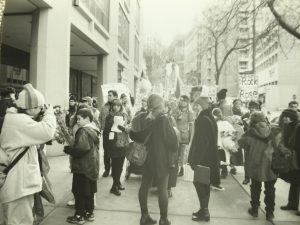
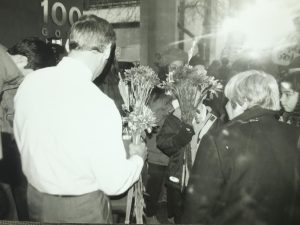
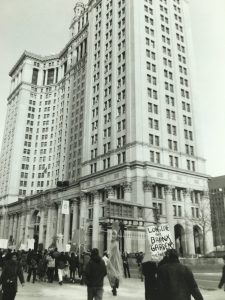
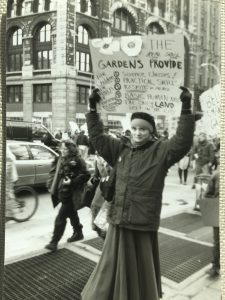

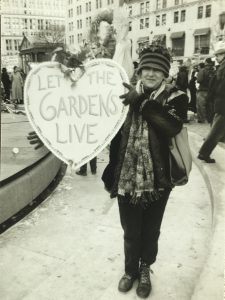
CITYWIDE GARDEN PRESERVATION COALITION EFFORT: In response to Mayor Giuliani aiming to sell garden sites for development, Earth Celebrations brought together gardeners from Harlem, Upper West Side, Lower East Side, Brooklyn and the Bronx of New York City to form a citywide garden preservation coalition in November of 1996. The first rally of the citywide New York City Garden Preservation coalition was held in February 2016 at City Hall. For the Valentine Procession and Rally gardeners with hand painted signs representing the gardens and giant flower puppets, delivered letters in support of the gardens to various city council offices along with bouquets of flowers.The formation of the citywide coalition was major turning point in the garden preservation struggle and building upon our local grassroots coalition efforts on the Lower East Side since 1994, now into a united citywide garden preservation movement. Earth Celebrations’ creative cultural organizing projects such as the “Procession to Save Our Gardens (1991-2005) on the Lower East Side, built this successful effort through its innovative strategies, offering a new paradigm of “cultural organizing” and “artistic activism” applying community-based art and a large-scale collaborative art project, along with partnership/coalition building, civic engagement and activism. Alongside the community-engaged creative strategies, Earth Celebrations integrated traditional community-organizing methods of a grassroots coalition with committees working on letter writing, research, mapping, outreach, press, and engagement of gardeners to testify at community board meetings and city planning hearings, as well as public rallies and creative actions. These successful creative organizing efforts since 1991 led to the preservation of hundreds of community gardens in 2002, when the new Mayor Bloomberg transferred hundreds of community gardens from proposed development into the New York City Department of Parks and Recreation, where they remain temporarily protected. Efforts are still underway to gain a permanent designation for the gardens, so all the efforts over these many years by the community to create the gardens from rubble-strewn vacant lots, the efforts and struggle that preserved the gardens, and current resiliency initiatives being implemented within the gardens to mitigate flooding and pollution run-off for a future sustainable ecological city, remain in perpetuity for generations to come.
New York City Coalition for the Preservation of Gardens:
The first citywide garden preservation coalition meeting in November 1996, initiated by Earth Celebrations, brought together gardeners form the Lower East Side, Harlem, Upper West Side, Brooklyn and the Bronx was at the Earth Celebrations office/workshop space in the 6th Street Community Center on the Lower East Side. The New York City Coalition for the Preservation of Gardens was formed and began meeting monthly in addition to Committees working on Research, Outreach, Newsletter, Press, Mapping, Public Actions, and Land Use Hearings.

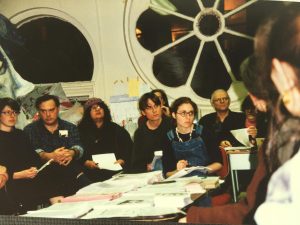


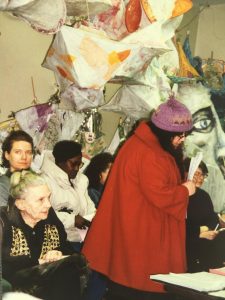
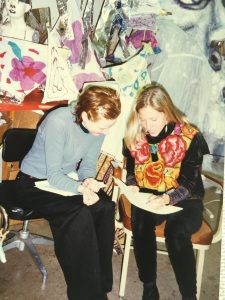
Earth Celebrations mobilized community gardeners to attend and testify at hearings at the community board, City Hall and the NYC Landmarks Preservation Commission.
New York City Coalition for the Preservation for Gardens testifying at City Hall in 1997.
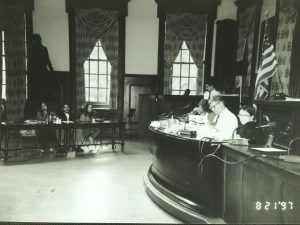
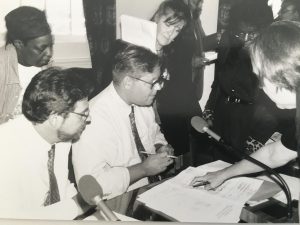
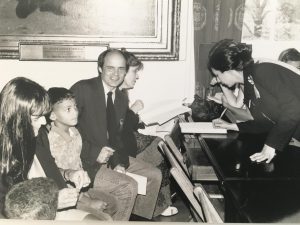
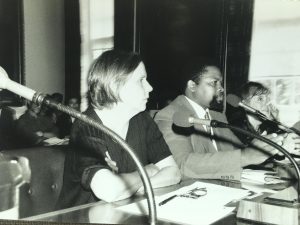
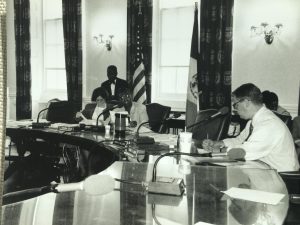
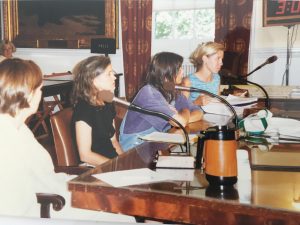
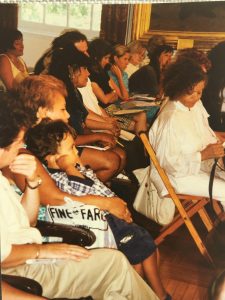

Garden Preservation Action to preserve Mendez Mural Garden on the Lower East Side, 1997.
City Council Member: Margarita Lopez and Debra Glick join community gardeners, Earth Celebrations, Lower East Side Garden Preservation Coalition and New York City Coalition for the Preservation of Gardens.

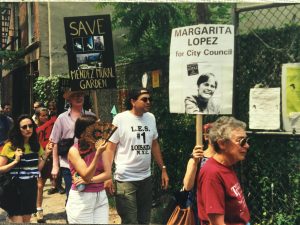

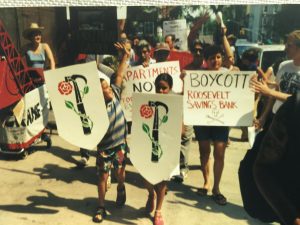
LINKS – MORE INFORMATION
LES Garden Map – (1997) https://earthcelebrations.com/les-garden-map/
What is a Land Trust – (1994) https://earthcelebrations.com/garden-land-trust/
Garden Preservation Coalition – https://earthcelebrations.com/garden-preservation-coalition/
Garden Preservation Archive – https://earthcelebrations.com/preservation-update/
Garden Preservation Press (1994-2002) – https://earthcelebrations.com/garden-preservation-press/
Earth Celebrations – Procession to Save our Gardens Press (1991-2005) – https://earthcelebrations.com/earth-celebrations-press/save-our-gardens-procession-press-2/
New York City Coalition for the Preservation of Gardens Newsletters (citywide coalition) – https://earthcelebrations.com/garden-coalition-newsletter
Newsletter Garden Preservation Updates
Update February 1997 – https://earthcelebrations.com/wp-content/uploads/updates/update2.html
Update August 1997 – https://earthcelebrations.com/wp-content/uploads/updates/update1.html
Update October 1997 – https://earthcelebrations.com/wp-content/uploads/updates/update1_18_98.html
Update January 1998 – https://earthcelebrations.com/wp-content/uploads/updates/update5-7-98.html
Update April 1998 – https://earthcelebrations.com/wp-content/uploads/updates/update042498.html
Letter Writing (1996-1997) – https://earthcelebrations.com/save-gardens-letter-writing/
